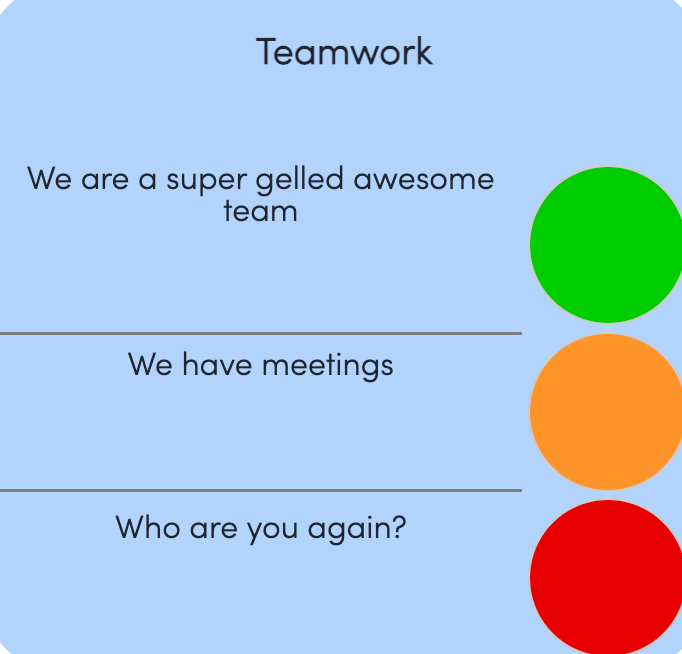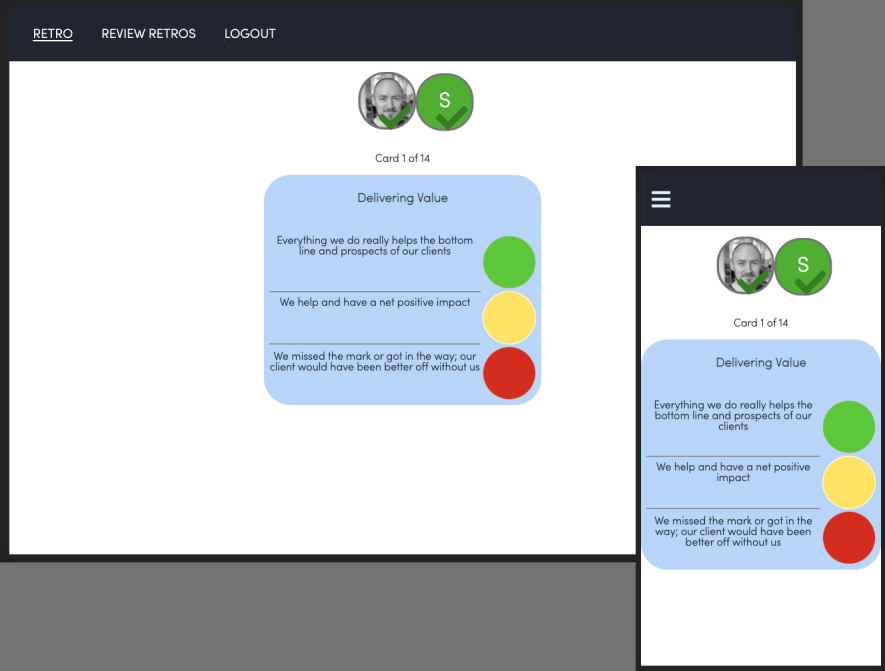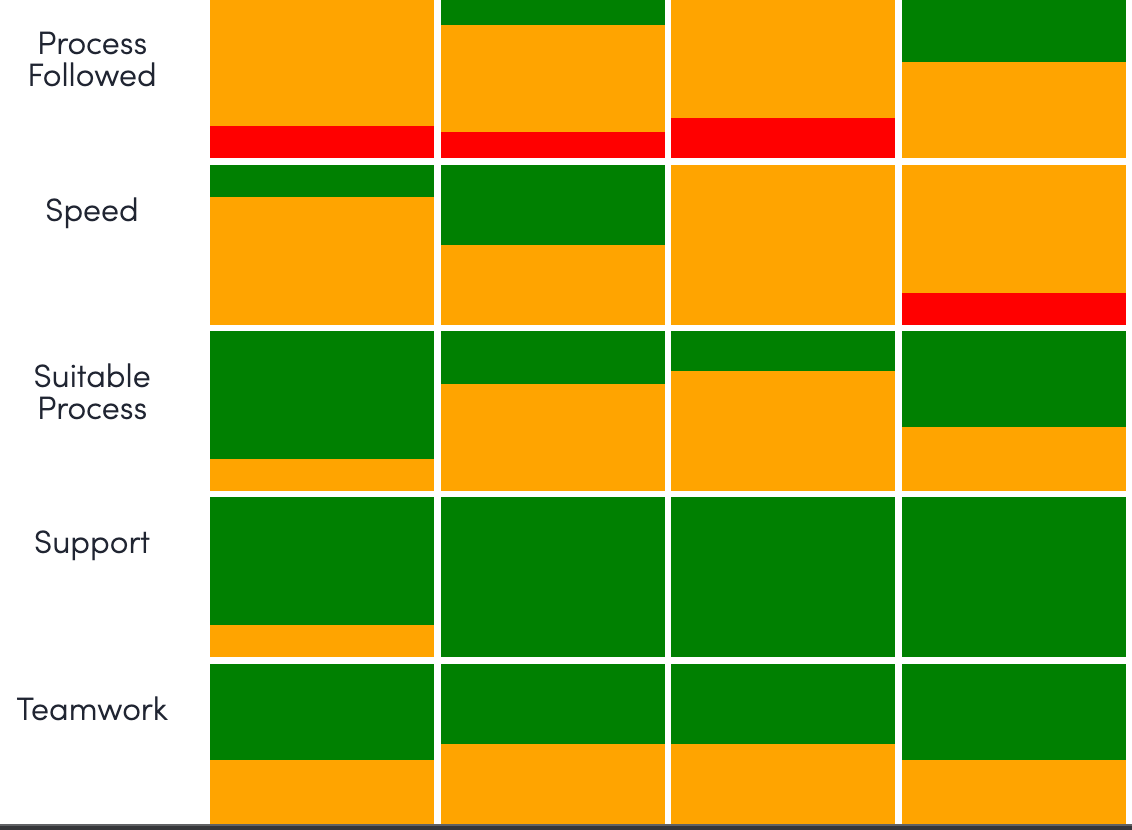
Creating a world class tech team is a holy grail for building a successful tech company. High quality technical design and code, building the right features at the right time, driving towards a long term vision and maintaining a healthy, enjoyable and productive work environment — are what every tech company strives for.
Great teams are not created out of nothing — they take advantage of the right environment and conditions to grow, learn and improve over time.
Promoting openness with team retrospective
I strongly believe that great teams are made — every team you encounter may have a potential to become great, if they work in the right culture and environment. And making a great team is not a magical process — it’s a series of attempts, successes and mistakes, peppered with some great individual skills and a lot of collaboration and feedback — all of which provides opportunities for improvement. And the improvement can be individual, but also team and environment related — process, ways of working, touch points and meetings, and many other things can all affect how the teams work together and the outcome they achieve.
The question is, is there a way to add a process and rigour to this reflection process, and promote continuous feedback and improvements in the team?
The answer is yes — and there are probably a few. One of the mostly used techniques is a team retrospective meeting/workshop, in its various guises. Team retrospective has been around for a while, popularised as part of Agile toolkit, and is an established method and process of ensuring any team has time and cadence of reflecting on its work (things that work, and those that don’t), identify the activities that make them better, and those that hold them app. Being open about success and challenges is the first step of being able to identify actions that could help us improve — and drive the team to achieve great things.
To do a retrospective well, it’s important to run regularly. It’s also critical to ensure every individual on the team to feel empowered to share, seek and give feedback.
The retrospective works best if they can be measured — so that the team can see the trends of improvements made. In addition, retrospective means nothing unless it results in actions that can drive better outcomes, and improvements of most important team indicators.
Spotify Team Check as Team Retrospective method
I have run and participated in many kinds of team retrospectives, but over the last few years it is one specific model for team retrospective that I’ve seen producing great results and having all the elements highlighted — Spotify Squad Check.
Spotify Squad check includes a number of indicators the team would score themselves on, using the traffic light system (red, amber, green), with red indicating problems and need for improvements and green indicating processes and practices that are going particularly well.
Spotify went further by defining some of the key indicators as well, e.g. speed, ease of release, fun, mission, pawns or players..

But indicators can be anything the team finds important for their success. We are, for example, using a lot of Spotify indicators (including Fun!), but also add a few of our own — e.g. capability growth, which feel is important for the team to continue expanding their expertise and increase the quality of our output.
After a quick round of votes, the team can discuss the overall result and share their thoughts and feelings about any particular indicator.
At the end of the session, we’d evaluate the score card, look at most problematic indicators and collectively devise actions for improvement. Focusing on lowest scores and those that have negative trends, ensures we always look for ways of improving the critical aspects of the team.
The indicators are recorded (to track trend), and actions noted and allocated to individuals so they can be reviewed at the next meeting.
Running Team Retro in a modern workplace
In the modern remote-first workplace, the cadence of the retro meetings and the engagement during retrospective could be difficult to achieve using video conferencing tools. Talking to your team in person, allows everyone to gauge the emotion of everyone around the table, making it easier to ensure openness and transparency in communication. When on Zoom, G-Meet or Teams, camera (on or off), position, video quality and cats and other pets can make it harder to run interactive sessions, especially the ones like team retrospective where a lot hangs on the openness of the participants and sharing views.
In order to run team retrospective well in remote and hybrid environments, we needed a tool to enable everyone to stay involved and participate wherever they are.
We also needed help in tracking trends and visualising results for easy sharing within the wider company and showcasing the progress of the team. Getting the historical data was key to spotting trends early and developing actions that promote good practices and improve any challenges we find along the way.
Since we are also engineering teams with a R&D Friday’s culture (every Friday we dedicate half a day to R&D and personal projects) we decide to build a tool that fits our requirements. I say we, but in reality it’s a brainchild of our Head of Engineering who must have become tired of taking notes and capturing photos and screenshots during every team retrospective in the early days of the company 😉

- Spotify Squad Check in mobile-friendly browser
Encourage the team to follow the established and proven practice for promoting feedback, learning and continuous improvement, individually and as a team
- Structured topic cards that are fully customizable
Use topic cards structured to drive the values and culture in the organisation. The default set of cards includes original Spotify Squad Check cards, but they can be customised, replaced or removed to whatever suite the your team
- Graphical summary and historical view
Clear graphical summary of the results for easy evaluation of any individual topic — focusing attention to cards that have lowest score or negative trends. Includes time-series view of previous retrospectives so that the trends are clear. Sometimes the changes in the score are subtle month-to-month (either positive or negative), but make huge differences over long periods of time — using the retro app, allows us to spot those trends as they develop and define actions that

We had some great success with the retro app, so we have made it available to everyone (for a free trial at least) at https://tsf-retro.web.app.

